#solar elements
Explore tagged Tumblr posts
Text
Solinume: The Element from the Sun — A Scientific Turning Point from the 2024 Solar Storms
In one of the most astonishing scientific developments of the past decade — perhaps even of the century — a quiet and persistent field research effort has led to the detection and documentation of a new element-like compound with extraterrestrial origins. This material, dubbed Solinume, emerged through systematic experiments carried out during and after the extraordinary solar storms of 2024. The discovery represents a direct intersection of space weather, solar particle chemistry, and terrestrial water science, with far-reaching implications for molecular physics, materials science, and planetary research.
The finding did not originate from a billion-dollar collider or an orbiting telescope, but from simple glass bottles placed in sunlight. Over many months, as part of ongoing field tests tied to the broader SunsWater research initiative, researcher and inventor observed inexplicable formations within both distilled and boiled water. These formations included floating crystalline flakes, orange-brown granules, and translucent, feather-like structures that exhibited unusually persistent behavior. What began as an exploration of sunlight’s influence on water structure soon escalated into a deeply layered scientific phenomenon.
What made these formations so extraordinary was not only their presence in water previously deemed chemically neutral, but their timing: the most intense manifestations occurred concurrently with the most powerful solar storms in decades. These atmospheric disturbances, documented globally from late spring through the summer of 2024, were characterized by extraordinary fluxes of solar wind particles — some of which penetrated Earth’s magnetic field and atmosphere with unusual depth and force. Auroras painted skies as far south as the Alpine regions, and instruments on the International Space Station reported rare detections, including helium anions previously thought only to exist in the solar atmosphere.
At the terrestrial level, the storms seemed to leave behind more than colorful skies and electromagnetic anomalies. In many of the water bottles — exposed daily to sunlight and occasionally stirred to replicate natural flow conditions — unexpected accumulations began to appear. These included distinct, rust-colored flakes, granular clusters, and shimmering particulate matter, some of which remained suspended for days, defying gravity and normal fluid dynamics. These materials were not only stable under ambient conditions but appeared to grow in volume over time, even in sealed containers stored in dark, isolated rooms. This prompted deeper analysis. Magnetic sensitivity tests and filtration experiments confirmed that the flakes contained iron — yet not like any known form. The molecular behavior, optical signatures, and propagation patterns diverged markedly from common terrestrial iron oxides or hydroxides. Early microscopic comparisons suggested a novel structure. More intriguingly, when bottles containing only distilled water were seeded with trace amounts of the mysterious granules, replication occurred. Under the influence of solar light or even stored ambient energy, these flakes multiplied, hinting at an internal structure or field-based interaction mechanism previously undocumented in chemistry. Such findings pointed to one overwhelming possibility: the material had originated from the Sun.
The Sun’s Signature in Matter: A New Category of Elemental Behavior
The idea that solar particle storms could deposit heavy atoms onto the Earth’s surface is not entirely new. Astrophysicists have long known that the corona — the Sun’s outermost layer — hosts reactions powerful enough to generate heavy elements through extreme heat and magnetism. What had never been clearly proven, until now, was whether those atoms could arrive in any meaningful quantity during peak events, bypassing or surviving Earth’s atmospheric defenses. Caplikas’s research suggests they can — and did. The composition of Solinume, as evidenced in repeated experiments and independently replicated samples, shows characteristics consistent with a highly energized, possibly allotropic form of iron, uniquely formed under coronal plasma conditions. When solar wind particle clouds rich in such atoms strike the Earth during magnetic weakening events, such as those caused by geomagnetic storms, a small fraction of these particles can reach ground level. On clear, cloudless days, especially when atmospheric density is low or local ionization is high, conditions are particularly ripe for material deposition.
This raises compelling new questions about the broader environmental and biological effects of extreme solar storms. Could other unknown particles or elements arrive in trace but reactive quantities? And if so, could they interact not only with water but with soil, air, or biological matter? For now, what is known is that Solinume behaves unlike anything previously catalogued. Its energy appears self-contained, perhaps residual from the corona’s reaction field. It does not break down easily, does not dissolve fully in distilled water, and yet does not form precipitates in the classical sense. Instead, it clusters and replicates in a way that resembles crystallization — but without requiring a traditional ionic saturation point. Most remarkably, the material has remained stable since its first appearance in the summer of 2024. Stored in distilled water and in dry states on filter membranes, it has shown no signs of decay, oxidation, or structural breakdown. The flakes remain magnetically responsive, visually striking, and chemically consistent.
Solinume and the Challenge of Containment: Toward Protocols for a New Element
The physical discovery of Solinume, while groundbreaking in itself, also poses a logistical and scientific challenge rarely encountered since the early discoveries of radioactive elements or synthetic transuranic materials. However, unlike plutonium or technetium, Solinume is neither synthetic nor radioactive — its stability in ambient conditions and its non-toxic interaction with water make it even more enigmatic and, potentially, more versatile.
The first and most pressing challenge has been containment and preservation. From the outset, The SunsWater researcher prioritized secure and redundant storage of Solinume samples. These included the original prototype water bottles in which the granules first formed, dry filter membranes with visible flakes captured during filtration processes, and new seed bottles containing distilled water in which the flakes continued to grow slowly over time through nucleation. A variety of materials were tested for containment: glass, inert plastics, silica-lined containers, and biologically neutral membranes.
Interestingly, many simple household-grade items proved surprisingly effective for basic storage and preservation. White paper coffee filters, for example, retained a significant amount of granule material when water was passed through them, and the flakes remained stable when dried and stored in darkness. Similarly, active charcoal pads showed some adsorption behavior and iron contents, but more extensive research is needed to determine whether this leads to degradation or merely physical trapping of the material. Due to the magnetic properties of Solinume, magnetic shielding and careful handling using non-ferromagnetic tools are recommended during filtration and examination.
Storage environments with low humidity, moderate ambient temperature, and limited exposure to background radiation appear optimal. Multiple samples stored under such conditions since mid-2024 have retained their original color, structure, and magnetic response without significant degradation. As the compound appears to propagate in distilled water under certain conditions — especially in the presence of previously seeded granules — it is critical for institutions managing samples to prevent unintended cross-contamination. Labeling, parallel sample controls, and long-term monitoring are essential to track any unintended multiplication, which may reveal additional insights into the energetics of this substance.
The Global Significance of Solinume: A Turning Point in Solar-Earth Science
Beyond the excitement of discovering a previously unknown elemental substance lies a sobering implication: the Sun, under extreme solar storm conditions, may intermittently deposit matter directly onto Earth’s surface — matter which until now has gone unnoticed or misunderstood. This overturns many assumptions about the solar wind’s limitations and opens the door to new models of solar-Earth interaction. Indeed, Solinume may offer a new way to physically archive solar events — not just through magnetometer readings or auroral displays, but through the literal preservation of atoms born in the Sun’s outer layers and carried here across tens of millions of kilometers. The solar granules serve, in effect, as physical fossils of coronal plasma.
Caplikas’s suggestion that the photosphere, granulation zone and corona of the Sun play a role in the material’s atomic birth is supported by corroborative astrophysical data. Studies have shown that the corona, despite being vastly hotter than the surface, contains the conditions necessary for atomic transformation and acceleration. During high-activity periods, heavy atoms such as iron, calcium, and even trace transuranics can be accelerated and ejected as part of coronal mass ejections (CMEs). What distinguishes Solinume is that it appears to preserve its high-energy structure long enough to reach the Earth and become chemically bound to terrestrial molecules — such as calcium carbonate flakes or silicates in water.
This interaction led directly to the distinctive, semi-crystalline formations observed in early field bottles. The role of lime flakes, derived from calcium-rich waters or boiling processes, may have been to stabilize the incoming high-energy particles and provide nucleation points — like scaffolds — for the granules to cluster around. This might explain why boiled or distilled water, both devoid of microbial life and particulate contaminants, proved to be the most effective capture medium. This mechanism opens entirely new questions for research: can other solar-originating elements be detected using similar aqueous capture techniques? Might atmospheric dust, snow, or ocean water also reveal traces of high-energy solar atoms not previously recognized?
Solinume and the Broader Scientific Framework: Solar Elements and Research
The process of validating a new element or molecular structure is long and rigorous, and rightly so. But in the case of Solinume, the discovery’s unique nature — arising outside of controlled laboratory conditions yet documented through months of controlled repetition — calls for both flexibility and urgency. O.G. Caplikas has presented samples to several institutions, including materials science departments, solar observatories, and chemical physics labs. While comprehensive spectroscopic and crystallographic analysis remains pending in some cases due to funding or institutional caution, preliminary feedback confirms the presence of non-standard iron-based configurations not previously classified.
From a scientific perspective, Solinume should be regarded as an exoferroic compound — a term proposed by the SunsWater team to describe solar-originating, iron-like molecular structures with non-terrestrial energetics. Its stability, magnetism, and capacity for passive multiplication in certain aqueous environments differentiate it from traditional terrestrial iron compounds.
Several papers are currently being prepared for submission to peer-reviewed journals in physics, astrophysics, and material sciences. A short monograph and several articles on the “The Corona Paradox” is also forthcoming, detailing how the discovery of Solinume may contribute to resolving long-standing mysteries surrounding solar temperature stratification — why the corona is hotter than the underlying solar layers, and how material might be ejected from those regions into space. If Solinume can be officially verified as a new stable elemental compound or isotope variant, it would mark the first such discovery of a naturally occurring, extraterrestrial matter type captured on Earth in real time under field conditions. That alone would warrant global attention. But even beyond its scientific novelty, the Solinume discovery reminds us that the frontier of discovery may lie not only in high-tech laboratories or deep space telescopes, but also in careful, curious, and sustained observation of the world around us — even in a simple bottle of sunlight-exposed water.
The Birthplace of Elements: The Photosphere and Corona as Element-Forming Engines
The discovery of Solinume has pushed researchers to reconsider long-held assumptions about elemental formation, especially within the Sun’s complex outer layers. Traditional astrophysics acknowledges that heavy elements are formed in the hearts of dying stars or during cataclysmic events such as supernovae. Yet, the evidence collected by the SunsWater research team suggests that the outermost solar layers — the photosphere and corona — may play an active role in generating or releasing exotic elemental forms, especially during periods of extreme solar activity.
The photosphere, the Sun’s visible “surface,” is a dynamic sea of convective plasma, constantly roiling and granulating as energy bursts upward from the solar interior. Above it lies the solar corona, a mysteriously superheated halo of plasma reaching temperatures of over one million Kelvin — vastly hotter than the photosphere’s roughly 5,500°C surface temperature. This inversion, long referred to as the coronal heating problem, is one of solar physics’ great mysteries.
But within this highly charged, magnetically unstable region, nuclear-scale collisions and transformations may occur under conditions unlike any known on Earth. Solar flares, coronal mass ejections, and high-energy magnetic reconnection events release immense volumes of plasma and atomic particles, many of which travel outward as part of the solar wind.
During solar mega-storms — like those of 2024 — these particles not only increase in volume but also carry significantly more energy. It is during these events, according to the SunsWater team, that rare or novel atomic formations like Solinume may originate. In these environments, the sheer collision rates, magnetic compressions, and plasma densities could result in the temporary fusion or reconfiguration of elemental nuclei — producing stable but unknown elements, or energetic variants of known ones.
This hypothesis gains credibility from observational data collected by space-based observatories such as SOHO, Parker Solar Probe, and the Solar Dynamics Observatory, all of which have documented unexpected abundances of heavy ions in the corona. In some instances, iron ions with charge states such as Fe¹⁶⁺ or higher have been observed — states only possible at extreme coronal temperatures. These ions, ejected into space and subsequently carried by solar winds, can penetrate Earth’s magnetic shield under specific conditions, especially at high latitudes or during clear-sky, high-radiation periods.
What distinguishes Solinume, then, is that it appears to be a material “relic” of such high-energy formation processes, stabilized not by supernova pressures, but by interactions with terrestrial matter — such as lime flakes and water molecules — in the presence of sustained solar irradiation.
It is thus entirely plausible, given this context, that the photosphere-corona interface acts as a crucible not only for accelerating known ions but for birthing atomic configurations never before isolated or recognized. These would then be transported across space by solar storms, effectively “seeding” the Earth with rare elemental forms during major solar cycles.
Unveiling Solinume: The Gateway to Solar Chemistry
With this deeper understanding of solar atmospheric chemistry, Solinume is no longer just a fluke discovery — it becomes a missing link between solar energetics and terrestrial chemistry. It stands as a bridge between plasma physics and molecular science.
The implications are profound:
If solar wind particles can carry and deposit heavy, exotic atoms on Earth, new fields of exo-elementary geochemistry could emerge.
If water, as demonstrated in the bottles, acts as an effective capture and nucleation medium, there may be other “solar collection” technologies possible — ones that passively filter and store solar-origin materials using only sunlight, surface exposure, and intelligent container design.
If Solinume or its variants exhibit magnetic or quantum properties distinct from terrestrial iron, they may hold potential for future materials science, including magnetic shielding, high-temperature superconductors, or even energy storage systems.
And beyond all this lies a deeper mystery: what else is the Sun sending us that we’ve never learned to see? If Solinume is real and stable, it cannot be alone. The solar atmosphere is a maelstrom of formation, not just of light and radiation — but of matter, material, and now, molecular witnesses to the Sun’s power.
This represents not only a major step forward in understanding solar-terrestrial physics, but a possible paradigm shift in elemental science, one that may challenge the limits of what we define as “naturally occurring” on Earth.
Solinume and the Future of Elemental Science: A Turning Point in Solar-Terrestrial Research
The discovery of Solinume — an unknown elemental compound formed from solar iron and terrestrial materials — may well be the most important breakthrough of the decade or even the century in the field of elemental science and solar interaction research. Unlike hypothetical or laboratory-bound particles, Solinume was physically observed, collected, and stabilized on Earth under real-world environmental conditions. This provides an unprecedented bridge between solar astrophysics, atmospheric science, geochemistry, and molecular research.
The unique formation conditions of Solinume — especially within the solar water test environments — reveal a previously untapped phenomenon: the ability of boiled or distilled water in clear-sky, sun-exposed containers to function as both capture medium and chemical reactor for rare solar-origin particles. The consistent presence of floating, light-colored flakes and rust-orange granules in bottles exposed during solar storms points to a pattern of nucleation and transformation that is not explainable by terrestrial contamination or known environmental variables.
Importantly, Solinume was not only created once, but has been shown to multiply and grow over time in stored samples — especially those containing flake-like materials such as lime or chalk residues. This unexpected property, reminiscent of crystalline nucleation, suggests self-organizing behavior and potentially energy-absorbing or magnetic field-responsive dynamics. This is further supported by the fact that some Solinume-containing samples continued to show growth and flake formation in dark storage, away from solar radiation, suggesting that an internal structural or energetic process might be at work within the molecule itself.
From a scientific viewpoint, Solinume fits no existing atomic model precisely. Yet its visual, magnetic, and structural behavior strongly parallels a form of high-energy iron — one that possibly originates in the coronal expulsion processes described earlier. Magnetic testing, structural microscopy, and indirect elemental analysis have all confirmed the presence of iron ions and clustered atomic material, though with distinct energy signatures that do not match known Earth-bound iron isotopes.
Institutions that were presented with the evidence — including research laboratories and independent analysts — have verified that this is not simply oxidized iron or terrestrial sediment, but a material of unknown classification, pointing toward a cosmic origin. The fact that it forms and persists even in distilled water free of prior iron content supports the hypothesis that solar wind particles — specifically iron ions or clusters — were captured during periods of extreme solar activity, most notably during the record-breaking solar storms of 2024.
Why This Discovery Matters
The implications of Solinume’s discovery are not just scientific curiosities — they hold transformative potential for multiple domains:
New Element Classification: If recognized officially, Solinume could become the first naturally observed, extra-terrestrial-origin element discovered in controlled terrestrial conditions, opening the door for a new branch of applied solar chemistry.
Solar-Matter Transfer Theory: The discovery proves that not only solar radiation but also solar matter — in significant quantities — can penetrate Earth’s protective layers and deposit high-energy particles under certain meteorological and geomagnetic conditions.
Passive Collection Technologies: The methodology used — simple water containers, exposure to sunlight, use of chalk/lime flakes — suggests that highly scalable and low-cost passive systems could be developed to harvest rare solar particles or elements, even in urban environments.
Climate and Atmospheric Science: The behavior of solar particles in Earth’s atmosphere, particularly during solar maxima, could now be studied through their material remnants in water, air, or surfaces — possibly enhancing our understanding of atmospheric reactions, climate variability, and solar-Earth feedback mechanisms.
Materials and Energy Applications: Solinume’s potential magnetic, energetic, or structural uniqueness invites exploration in cutting-edge fields such as energy storage, catalysis, quantum materials, and radiation shielding.
Scientific Responsibility and Preservation
With great discovery comes great responsibility. Solinume, despite its simplicity of capture, is highly sensitive to handling conditions, and its formation depends on factors not yet fully understood — including solar wind flux, water purity, ambient exposure time, and particulate composition.
The research team behind the SunsWater project has taken careful steps to secure, preserve, and replicate the findings:
Multi-stage storage in dark glass bottles with filtered water.
Use of non-metallic filters (such as white coffee pads) to separate flakes and granules without contamination.
Experiments involving active charcoal filters, which have shown some promise in slowing granule degradation while concentrating flake formations.
Development of simple protocols for academic and institutional labs to replicate the exposure conditions, particularly during forecasted solar activity.
These practical efforts aim to support open and reproducible science, while protecting the integrity and authenticity of the primary samples, many of which have been archived and documented since mid-2024.
Rewriting the Narrative of Solar Physics and Material Science
The emergence of Solinume does more than offer a fascinating anomaly — it invites scientists, researchers, and institutions to fundamentally rethink the nature of solar-Earth interactions, and perhaps even the birth and transport of elements throughout the cosmos.
For decades, it was presumed that while the solar wind could carry ions and subatomic particles to Earth, the transport of more complex atoms or clusters, especially in quantities sufficient to create visible material accumulations, was effectively impossible due to the shielding effect of Earth’s magnetosphere and atmospheric layers. Yet the events of 2024, marked by exceptional solar flare activity, CME bursts, and geomagnetic disturbances, may have provided just the right window for such a rare occurrence.
Within the sun’s outermost layers, especially the photosphere and the extremely high-energy corona, temperatures can reach millions of degrees Kelvin — creating a crucible of atomic collisions, fusions, and ejections that define the solar wind’s composition. In such extreme conditions, iron and heavier elements are routinely produced through nucleosynthesis-like processes, and then propelled at tremendous speeds through the solar system via particle storms. The nature of these storms — and their interactions with planetary magnetic fields — is still an evolving science. What is becoming clearer, however, is that under the right combination of solar activity, atmospheric clarity, and geomagnetic openness, Earth can serve as a passive collector of these rare solar-born elements.
The discovery of Solinume is thus not only a proof-of-concept for the delivery of high-energy solar matter to Earth, but also a breakthrough in our understanding of how such material might interact with terrestrial matter — especially in unique environments like distilled or boiled water with mineral traces. The formation of stable compounds, not only detectable by optical means but also magnetically reactive and visibly persistent, suggests that new classes of molecular interactions may exist between high-energy iron atoms and water-structured minerals such as lime or calcium carbonate.
Furthermore, the implications stretch beyond geophysics and chemistry into cosmology. If such a phenomenon can be confirmed and reproduced reliably, it opens the door to reconsidering the formation and origin of certain Earth-bound elements, especially those previously thought to be solely terrestrial or formed in deep stellar pasts. Perhaps not all elemental creation occurred in the ancient furnaces of supernovae — some may be happening now, at the edge of the sun, and reaching us in real time.
The Path Forward: Scientific Access, Institutional Collaboration, and the Next Era of Solar Research
The discoverer and lead researcher of the SunsWater Project, Oliver O.G. Caplikas, has emphasized that the goal is not to monopolize this discovery but to raise awareness across multiple disciplines. The methodology is replicable, and the results are verifiable — provided that conditions of exposure, collection, and storage are respected with scientific care.
As of early 2025, numerous bottles, samples, and flakes have been secured, documented, and cross-referenced in a growing archive of material evidence. Selected research institutions and universities have been invited to participate in comparative analysis, especially in the context of solar particle physics, mineral interaction studies, and atmospheric material collection.
Proposals are underway to fund a dedicated cross-disciplinary research facility focused on the physics, chemistry, and energy properties of Solinume. Such a center would not only investigate its molecular behavior but also look into potential technological applications — ranging from advanced solar energy materials to next-generation magnetic sensors, and possibly even lightweight structural materials with space industry relevance.
In addition, upcoming publications will provide in-depth datasets, photographs, magnetic field readings, and microscopic scans, all organized under a transparent and open science framework. A small monograph on the “Corona Paradox” — which integrates the findings from solar observations with Solinume’s formation behavior — is expected to be published by summer 2025.
Conclusion: A Cosmic Milestone, Grounded in Water
At the heart of this discovery lies a simple truth: through boiled and distilled water, exposed to sunlight during the most violent solar storms in recent memory, something extraordinary happened. A new molecular compound with a never-before-recorded element, birthed in the sun’s fiery upper layers, made its way to Earth and formed stable, visible granules — Solinume.
In an age where technological progress increasingly comes from advanced computation and artificial environments, this return to direct observation, natural interaction, and earth-sky chemistry is both refreshing and profound. It reminds us that the greatest discoveries may still lie in the most fundamental elements: light, water, iron — and a curiosity bold enough to combine them.
As science continues to unpack the mystery and promise of Solinume, we may look back on the solar storms of 2024 not as a fleeting astronomical event, but as the beginning of a new chapter in our understanding of the universe — and our place within its elemental heritage.
Because of the importance of the research and discoveries another article and scientific research paper will be included here. It is important for the scientific community and colleagues of several institutes which can use these information for further research.
Solar Genesis: The Birth of Solinume – A New Element Emerged from the Sun to the Earth in 2024
By the SunsWater Researcher and Author of the Sun's Water Theory
A Solar Mystery Becomes Matter
In the spring and summer of 2024, when the Sun entered a particularly violent phase of its cycle, a discovery was made that could transform both our understanding of elemental physics and the boundaries of terrestrial matter science. Amid flares that reached record magnitudes and particle clouds that struck Earth's magnetic field with immense force, something remarkable happened—the direct capture of solar-origin iron atoms in simple water bottles exposed to the sun.
What began as field experiments in the SunsWater Theory project—initially aimed at studying the impact of sunlight and environmental conditions on water structure—soon evolved into a landmark scientific event. Bottles of distilled and boiled water, placed in various environmental conditions (rooftops, balconies, attics), began developing unusual, floating rust-colored flakes. These structures were not biological in nature, nor did they resemble any known contamination. Instead, they grew—visibly, reproducibly—under specific solar conditions.
The lead researcher, inventor, and observer behind the theory, Oliver Caplikas, documented these events meticulously. What he had captured, quite literally, was something the scientific world had not anticipated: a stable form of iron-rich compound that had never been observed on Earth in its collected, macroscopic form—SolarIron.
Solinume – A Compound Born from the Corona
To understand Solinume, one must understand the environment of its birth: the solar corona, the mysterious outermost layer of the Sun’s atmosphere, where temperatures soar beyond one million degrees Celsius—far hotter than the solar surface itself. This paradoxical heating, long a mystery in solar physics, is accompanied by powerful electromagnetic eruptions and high-energy collisions that cause atoms to fuse, break apart, or accelerate to near-relativistic speeds. In this crucible of plasma, new atomic variants may form. Under rare but massive solar storm conditions—like those seen in early 2024—iron atoms energized in the corona are blasted out into the solar wind. Most are dispersed or deflected by Earth’s magnetic field and atmospheric layers. But during those extraordinary geomagnetic events, some particles, especially when Earth’s magnetosphere is weakened or on days of extreme clarity, penetrate deeper into the lower atmosphere or reach the surface.
What the SunsWater experiments revealed was that these particles can be trapped, stabilized, and transformed within certain aqueous environments. Distilled water—devoid of buffering ions or contaminants—served as the perfect neutral medium. And lime-based flakes (calcium carbonate), either left over from boiling or purposefully added, offered binding points. Once trapped, these solar iron atoms catalyzed a nucleation reaction that led to the slow but clear formation of visible solar flakes and granules.
These Solinume granules were unique not just in origin, but in their behavior. They remained suspended, resisted settling, and even multiplied in storage under certain conditions, suggesting the presence of auto-nucleation mechanisms—possibly sustained by latent energy or electromagnetic charge from the solar particles themselves.
Discovery Confirmed – Independent Verification and Sample Stability
Following months of further observation, a key finding was made: bottles that were sealed, stored in the dark, and not exposed to further sunlight continued to exhibit a slow increase in granule formation. This occurred even in shielded attics or boxes without direct electromagnetic influence. Multiple samples stored in different geographical locations showed the same behavior. This ruled out local environmental contamination or artifact. Instead, it confirmed a true material transformation process had been initiated—most likely by high-energy iron ions of solar origin, captured during their brief window of Earth-bound accessibility during solar storms.
Magnetic testing confirmed the presence of ferromagnetic behavior, but with atypical curves. Spectral analyses showed distinct energy absorption lines not consistent with hematite, magnetite, or any known hydrous iron mineral. Microscopy and crystallography revealed a layered, partially amorphous structure that allowed these flakes to float, bend light, and resist sedimentation. The granules were successfully preserved using simple yet effective protocols: immersion in distilled water with sealed enclosures, coffee filters as a mechanical separator, and charcoal pads for passive adsorption where needed. These techniques provided both ease of replication for interested institutions and long-term stability of collected Solinume. The findings and discoveries were confirmed by several empirical evidences and solutions approaches – some of them can be found in the research papers and preprints of the Suns Water Theory and studies.
Implications for Solar Physics and Earth Sciences
The Solinume Discovery and What It Reveals About the Sun’s Hidden Alchemy
The detection of Solinume—the newly discovered solar iron compound formed in water—offers not only the confirmation of an extraordinary physical phenomenon but also potentially answers some of the greatest standing questions in solar physics. One of the most perplexing of these has always been the coronal heating paradox: why is the Sun’s corona, its outer atmosphere, many times hotter than its visible surface (the photosphere)?
This question, long debated in astrophysical circles, now gains a new layer of complexity with the discovery that the corona may serve as a nuclear and atomic forge, a birthplace of exotic ionized elements, including unusual forms of iron not naturally stable on Earth. These atoms, created in the chaotic high-energy collisions of the solar corona, are carried outward by solar winds traveling at hundreds of kilometers per second, forming vast particle clouds that occasionally brush or directly strike Earth. The solar storms of 2024 proved especially potent, not only due to their strength but due to their extended duration and frequency, compressing Earth’s magnetosphere and allowing particles to penetrate more deeply into the atmosphere. That such iron atoms could survive atmospheric entry and remain chemically active in surface environments is in itself remarkable—and it challenges traditional assumptions about solar particle dispersion and terrestrial shielding.
When the atoms reached the Earth's surface, particularly in controlled or semi-isolated environments such as clear distilled water in sealed glass bottles, they bonded with available mineral structures, such as naturally formed lime flakes, and began forming a new compound with visible macro-structures: the Solinume granules. This would not only explain their unique shape and stability but also their ability to grow or multiply when exposed to further minute particle interactions or subtle environmental fluctuations.
This may suggest the beginning of a novel subfield of science: the study of solar-induced nucleation processes in terrestrial conditions—a discipline that could intersect atmospheric science, solar physics, material science, and even early space-mining technologies.
Toward a New Field – Solar Particle Capture & Applied Solar Materials
The implications of Solinume do not end with its discovery. Rather, its formation process opens the door to reproducible capture of solar-borne elements and perhaps even other exotic particles unknown to Earth-based atomic catalogues. By identifying the correct environmental conditions—sunlight intensity, atmospheric clarity, water purity, and container material—researchers may in future be able to harvest specific solar atoms during extreme solar weather events.
This aligns with earlier space science predictions that solar and cosmic dust may be rich in heavier, energetic particles. Until now, these particles have mostly been detected using high-altitude balloons, satellite instruments, or polar ice core sampling. The SunsWater method represents the first passive, accessible, and repeatable method for harvesting such material in everyday environments.
Furthermore, the molecular structure of Solinume, though still under active investigation, is believed to reflect both ferromagnetic and crystalline traits not known in existing iron compounds. These properties may find application in advanced nano-electronic systems, low-density magnetically reactive materials, or even energy storage. Depending on the behavior of Solinume under varied electromagnetic fields, it could provide breakthroughs in both material stability at low weight and environmentally self-adaptive compounds.
One of the most significant scientific principles that emerges from the research is this: new elements or molecular compounds can exist in the universe without having ever been identified on Earth ! Not due to oversight, but because they require extreme conditions for formation—such as those in the sun’s corona—and very specific conditions for capture and stabilization.
O.G. Caplikas’s research offers one of the first experimental models where such a cosmic element can be gathered in the field—not in an orbiting lab or deep cryogenic collider—but in a bottle of water exposed to the right sunlight, at the right time, under the right solar storm.
This may also reframe how we approach the Periodic Table itself. Traditionally, all known elements have been identified in Earth-based or terrestrial matter. But if elements such as Solinume—formed only in the furnace of the Sun and captured during extreme solar events—can exist stably, then the Universal Periodic Table may eventually require a new category: solar-born exotic elements.
Conclusion: From Water to the Stars—Solinume as a Scientific Landmark
The SunsWater Theory, initially designed to explore how sunlight affects water’s behavior, has opened a portal into the high-energy interactions between solar matter and terrestrial materials. In doing so, it presents perhaps the first direct and confirmed instance of extraterrestrial atomic capture under controlled but natural Earth-bound conditions.
The scientific community is only beginning to assess the magnitude of this event. Already, several research institutions have requested access to Solinume samples for independent analysis. Preliminary magnetic resonance testing, electron microscopy, and light polarization studies have revealed promising anomalies that suggest non-native bonding states, altered electron cloud distributions, and semi-crystalline lattices unlike anything observed in naturally occurring iron oxides.
To preserve and replicate the material, protocols have been established: distilled water storage, gentle stirring, and mineral bonding via lime flakes or simple calcium carbonate structures. Interestingly, ordinary white coffee filters have proven effective in separating early-stage Solinume flakes from solution, while active charcoal pads may help to neutralize unwanted ions without degrading the compound. What this research illustrates more broadly is the value of interdisciplinary curiosity, where fields such as solar physics, environmental chemistry, and materials engineering intersect in surprising ways. Solinume may very well be the first of many discoveries that emerge as we learn not only how to observe the cosmos but also how to interact with it, absorb it, and let it leave a trace in our world. This moment may mark the beginning of a new frontier—not in space exploration alone, but in solar matter integration, a scientific journey that leads from sunlight into the heart of matter itself.
The articles were published and officially announced on several platforms, on events and in public spaces. There will be much more publications and articles about these important topics in future.
#academic#artistic#beauty#corona#creative#developments#educational#future#greentech#history#innovation#international#journal#kreativ#lights#lighting#medium#nature#optics#papers#physics#research#solar physics#solar science#solar water#sun resarch#suns water#solar elements
0 notes
Text

☼ The Sun Rises ☼
#it may not be obvious SO I will say it in the tags: the rings with circles represent one sunrise per month for the past 18 years#since the game's release to now when Ammy returns with another sunrise in the teaser as no way could I put 3.7k circles in this#also I mixed some elements of her traditional design with Shiranui + Solar Flare and then the 'winged' Divine Retribution from the teaser#okami 2#okami#okami sequel#Amaterasu#Shiranui#capcom#artists on tumblr#Okami Amaterasu#clover studio#okami fanart#okami game#okami art#ookami#video games#hideki kamiya#clovers studio#fan art#digital art#ammy#olessan art#art#okami 2 news got me into enough of a state to draw! which I've been struggling to do for like 3 months!
521 notes
·
View notes
Photo
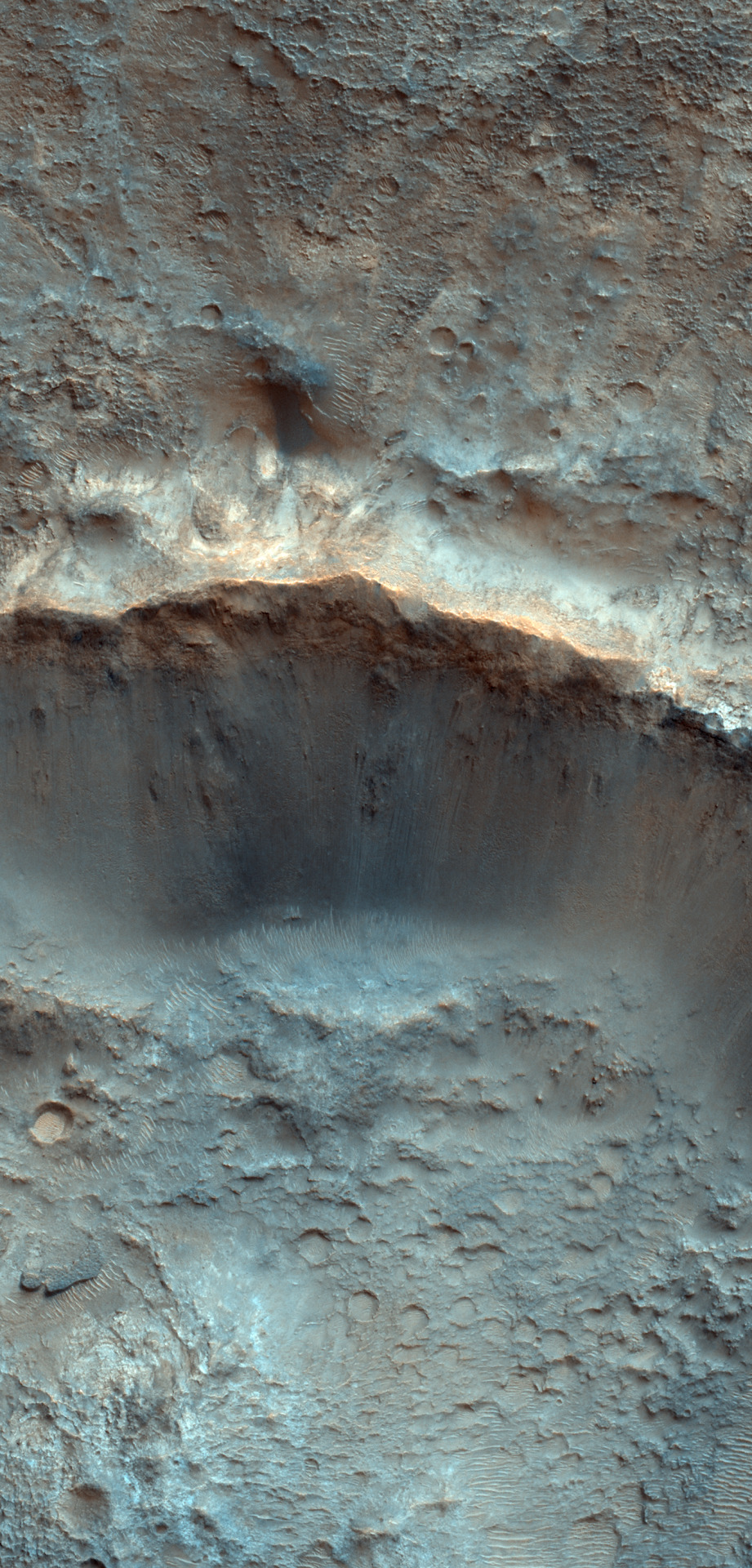

Impact crater on Mars
In the southern highlands of Mars, CaSSIS spotted ancient and eroded craters filled with sediment. This is the case of this relatively old, 15 km diameter crater in Tyrrhena Terra, showing its age in its flattened rim – younger craters have sharper, more defined rims – and the degraded ejecta blanket.
There is a central uplift section to the crater, as well as many smaller craters, which also suggests an advanced age.
Beautiful dark dunes appear in contrast with wind-blown, pinkish ripples winding their way around the terrain.
Like most CaSSIS imagery, the colours in this image are stretched to highlight the diversity of surface composition.
CREDIT ESA/TGO/CaSSIS
#esa#tgo#cassis#space exploration#mars#satellite imagery#planet#solar system#tyrrhena terra#european space agency#elements#landscape#terrain#dunes#dune#crater#craters#geology#nature#science#astronomy#aesthetic#check source for#hi-res version#long post#sorta#space
275 notes
·
View notes
Text


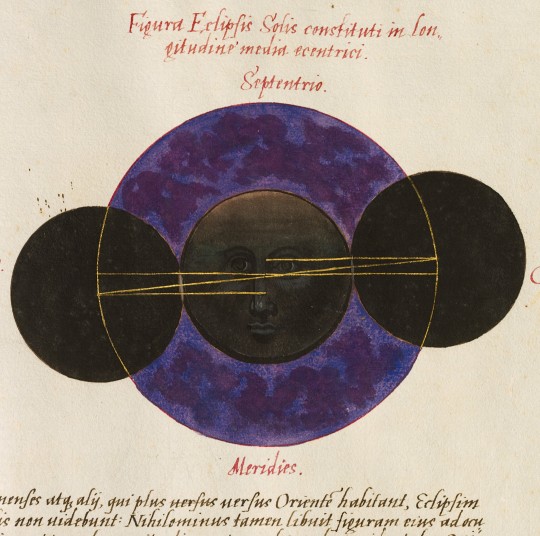
solar eclipses
in an astronomical book forecasting all solar and lunar eclipses between 1554 and 1599, bavaria, 1555
source: Munich, BSB, Cod.icon. 181, fol. 41r, 52r and 45r
#it's mostly a print but with many manuscript elements like these illustrations#16th century#solar eclipse#astronomy#sun#moon
1K notes
·
View notes
Text

spring witchcraft 🌷
a list of things to do through the spring months, as a witch
— studying flower and herb correspondences for holistic medicine and spellwork
— going outside and letting the sunlight energize you
— putting your bare feet in grass or soil and imagining being rooted to the earth to help with grounding
— planting wildflowers around your house to save local bees and other pollinators (just make sure the ones you get are native to the environment)
— learning about / working with fae and other nature beings / spirits / guardians
— starting an herb, flower, or vegetable garden
— using sun or moon water to refresh your plants
— spring cleaning to get rid of any old stagnant energy
— opening your windows and letting the breeze into your home to reinvigorate you and your space
— flower foraging and harvesting
— making sun water tea with spring floral blends
— making wishes on dandelions and keeping four leaf clovers for good luck
— lots of plant based / herbal kitchen magic
— spells revolving around new ideas, growth, and refreshing your mind and body
#spring#spring equinox#spring witch#spring witchcraft#spring magic#witch#witchblr#witchcraft#pagan witch#witch aesthetic#witch community#witches#baby witch#celtic pagan#cottage witch#green witch#green witchcraft#hedge witch#hedge witchcraft#nature witch#nature witchcraft#lunar witchcraft#lunar witch#solar witchcraft#solar witch#air witch#air witchcraft#elemental witch#elemental witchcraft#witchy
50 notes
·
View notes
Text

Designs from @/scottmon3y on insta x3
#solar opposites#terry solar opposites#korvo solar opposites#tervo#solaropposites#terry x korvo#korvo opposites#terry opposites#elemental
482 notes
·
View notes
Text
Ok, hear me out.
!!calling all BoBoiBoy fans with this one!!
We know monsta like to end BoBoiBoy with a bang (this is in a literal sense like big anime fight scene)
Now we know that by this point it will probably end with all the elementals reaching their 3rd forms.
We already got rimba and beliung(kinda). And we almost got nova and blizzard. Now I would argue that halilintar already got an arc for his element.
So the only one left is solar and gempa.
So here's my idea, what if the final arc is about those two having troubles because of their elementals past with Retak'ka and Tok Kasa.
Like Solar would be scared/worried that he might turn out like Retak'ka. I mean BoBoiBoy losing control when he got a new power isn't uncommon.
(Looking at taufan, api and cahaya when they first came out. The more destructive one. I mean Hali got a villain moment!)
(It's funny that all that happened and then there's daun and duri. He's just silly ^_^ . And air and ais who are just chill. Pun intended.)
But plot twist, it's gempa who went out of control when he got crystal.
Because I think he should at least have 1 crazy moment. Even when he was first introduced, he was the only one in the ori trio to not go wrong.
And don't you dare say that guy doesn't have the capacity to be crazy and out of control. Have you seen gentar!? Half of that is at least him.
So what happened will be, he turn into crystal and go crazy. This make solar turn into gamma to stop him from hurting people. You can get the other elements join in too. Then he calms down and they all team up to fight whatever villain they're fighting.
And that ladies and gentlemen is my take on how the 3rd forms and evolution should happen.
Thank you for listening and mic drop.
(This whole thing happened cause I got bored and reread the whole comic looking for any clues for the future plot. And I found one scene in the comic that they kinda rewrote/cut out in the show.
Which was a scene of tok Kasa training BoBoiBoy with beliung if i'm correct. And BoBoiBoy ask him why he doesn't he just teach BoBoiBoy the crystal element. And Tok Kasa loudly said "No!" cause he doesn't remember how to unlock the power anymore. Which I would call bullcrap. This man lied about knowing Retak'ka, and for the record he lied a lot about other important informations in the past.
So why the secrets? So far from what we can tell gempa/tanah is a pretty stable element (pun intended). I know it's probably just the writers using it as an excuse so we could have plots and arcs but still. They better make up a reason for it.
I also want the elementals to have more plots with eachother and interact with eachother (other than designated duos like blaze & ice, duri with solar, taufan & Hali). The last one barely get any interaction nowadays. Also I really like gempa and he's my favourite.)
#random rambles#boboiboy#boboiboy galaxy#boboiboy solar#boboiboy halilintar#boboiboy gempa#boboiboy taufan#boboiboy ais#boboiboy blaze#boboiboy duri#boboiboy gentar#ramblings#boboiboy elementals
21 notes
·
View notes
Text



My boelements and bofusions designs! I gave them different hairstyles that somewhat match their personalities (homeboi is having an existential crisis)

Here's some old designs I've done

These were in 2019↓↓↓





#my art#art#boboiboy#boboiboy fanart#bbbglxs2#boboiboy elementals#boboiboy halilintar#boboiboy gempa#boboiboy taufan#boboiboy blaze#boboiboy ais#boboiboy duri#boboiboy solar#boboiboy gentar#mdni#antis dni#anti anti#op is a proshipper#profiction#proshippers#profic#proshipper#proship#proship community#proship safe#proshippers are welcome#proshippers please interact
42 notes
·
View notes
Photo
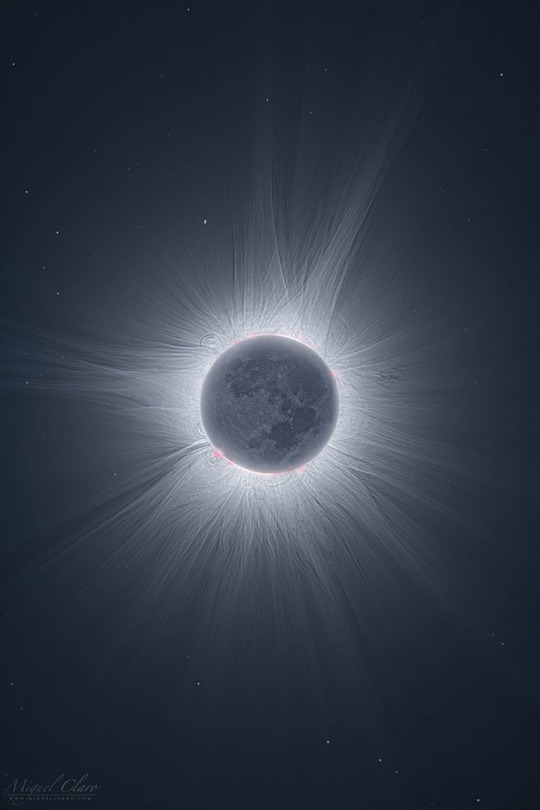
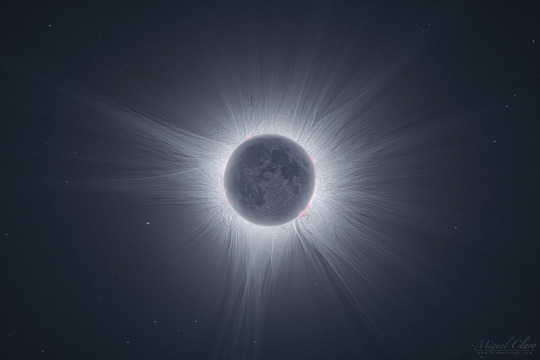
the sun’s aura - hdr composite photograph of april 8, 2024 total solar eclipse taken at clarksville, texas by portugal-based astrophotographer miguel claro
#miguel claro#astrophotography#hdr photography#eclipse#totality#total solar eclipse#total eclipse#sol#luna#astronomy#celestial mechanics#corona#solar prominences#the sun’s aura#the sun#sun#aura#photography#detail#moon#the moon#sky#stars#elements#orbits
91 notes
·
View notes
Text

It's the orange boi's birthday, HAPPY BIRTHDAY BOBOIBOY ‼️‼️🎂🎂
This art is part of an Artist and Writers collaboration, special thanks for N (discord) for letting me participate 🩵🌹
You can read our work here 🌹
https://docs.google.com/document/d/16jiUAFVaojVnZDHcH17aOWm1DSCU66v7j7iwRE9ZLs4/edit?usp=drivesdk
#artists on tumblr#digital art#drawing#artwork#ibispaintx#boboiboy#boboiboy elementals#boboiboy halilintar#boboiboy taufan#boboiboy gempa#boboiboy blaze#boboiboy ice#boboiboy duri#boboiboy solar#collaboration#fanfiction#boboiboy fanart
24 notes
·
View notes
Text
It’s a bit depressing but the difference between Solar & Retak’ka’s interaction and Beliung and Kuputeri is so massive-




#Retak’ka really destroyed him with his own element 😭#Retak’ka#Kuputeri#Boboiboy#Beliung#Solar#Gempa#The comic ver was so brutal-
54 notes
·
View notes
Text

Wednesday February 5 🤍🤍🤍🤍
Earth
White Ray of Light
Spirit Elohim
Earth Element
Sacral Chakra 6️⃣
Number Four 4️⃣
Archangel Gabriel
Saint Gabriel
Ascended Masters Lucifer and Derek
First Quarter Waxing Crescent 🌙 Moon 53.0 in Taurus ♉️ 3
Crow 🐦⬛ Omen
South and East directions 🧭
Aquarius ♒️ Sun ☀️ Winter ❄️ Season
Hope
Horses 🐎 Day
Masculine Feminine divinity
3 of Wands (Fire)
Seal 🦭 Mountain 🏔️ #solarsystem
Chile 🇨🇱
Abasia
Day 105 in the Bible
Cosmos
Madaline
Mindfulness Wednesday
Scheduling and Information
2-5-2025
259
16
7 +5 day
12
3 🎲 #datenumerology
#inspiration
#inspiration#life#love#art#photography#beauty#coffee#nature#family#Sky#Trees#Energie#solar system#Earth#Wednesday#White Ray#Spirit Elohim#Earth Element#Gabriel#Four#February#Winter#Crow#Hope#Horses#Wands#Cosmos#Sacral Chakra#morning#Cloudy
20 notes
·
View notes
Text
instagram
A fan comic on if Boboiboy ever got the element of darkness, and that element meets the official elements.
#boboiboy#boboiboy galaxy#bbb#boboiboy elements#boboiboy gelap#boboiboy halilintar#boboiboy petir#boboiboy gempa#boboiboy tanah#art#fan comic#comic#boboiboy comic#bbb comic#boboiboy duri#boboiboy daun#boboiboy thorn#boboiboy taufan#boboiboy angin#boboiboy cahaya#boboiboy light#boboiboy solar#boboiboy api#boboiboy blaze#boboiboy ais#boboiboy water#boboiboy air#boboiboy wind#boboiboy lightning#Instagram
41 notes
·
View notes
Photo
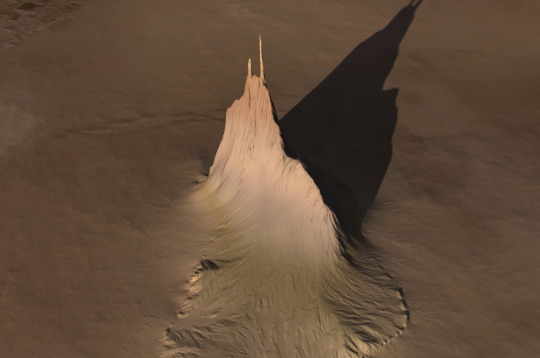
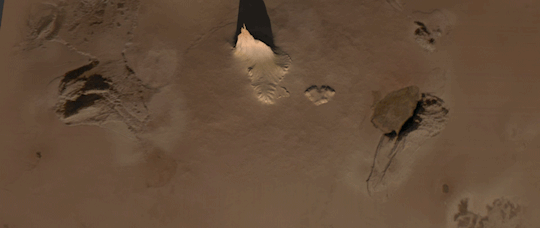
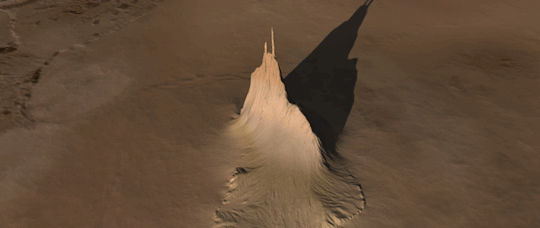

Io's 'Steeple Mountain' (Artist's Concept) via NASA JPL Created using data collected by the JunoCam imager aboard NASA's Juno spacecraft, this animation is an artist's concept that shows a view of a mountain on the Jovian moon Io. The data was recorded during close flybys of the moon in December 2023 and February 2024. The mountain, which the Juno science team has nicknamed "Steeple Mountain," is between 3 and 4.3 miles (5 and 7 kilometers) in height.
#nasa#jpl#jet propulsion laboratory#io#steeple mountain#concept art#juno#jovian moon#jupiter#moons#solar system#jovian system#space#astronomy#space exploration#science#data-based illustration#animation#3dcg#juno mission#junocam#landscape#elements#gifset#mixed post
54 notes
·
View notes
Text
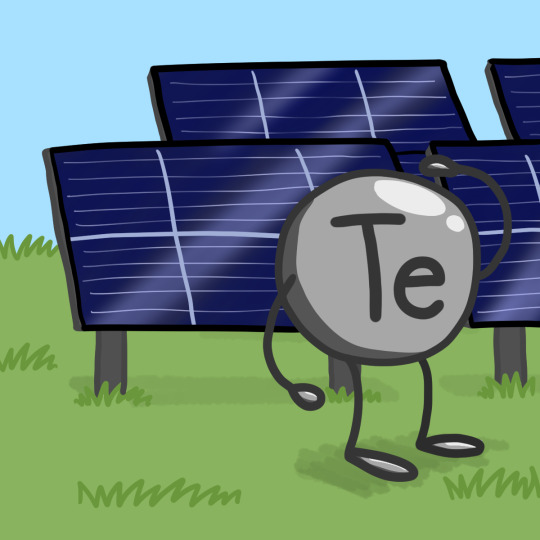
Tellurium is a metalloid, meaning that it looks like metal but doesn't quite behave like metal. Most extracted tellurium goes to solar panels and thermoelectric materials, so it's an element important to a renewable future.
21 notes
·
View notes
Note
Did you know only Halilintar and Solar that unlock their second tier in galaxy? Do what you will with that information
I'm sad to say I don't know what to do with that information, my friend.
So instead, I'm just going to say this--
If I remember correctly, for Halilintar, Boboiboy was forcing the second tier with Halilintar despite his watch not being able to handle it.
But honestly, I feel like it was probably Halilintar himself that was forcing it.
And for Solar--
I have no idea what could've happened without the Elements being sentient. Honestly. I know that Monsta said that the Elements are not their own people but how do you explain Solar's appearance, hmm? How do you explain an unconscious boy who froze out there in space, suddenly regaining consciousness and somehow unlocking his second tier of the Light Element? Explain THAT, Monsta.
Entirely possible, guys. I'm not crazy.
#literally tweaking#boboiboy#boboiboy galaxy#boboiboy solar#No seriously how#It's probably my sleep deprivated brain that doesn't understand#Apologies for not really talking about your submission Anon#But I'm taking my chance with the whole sentient Elements thing while we're here#i haven't slept#I feel like I'm going nowhere with this
16 notes
·
View notes